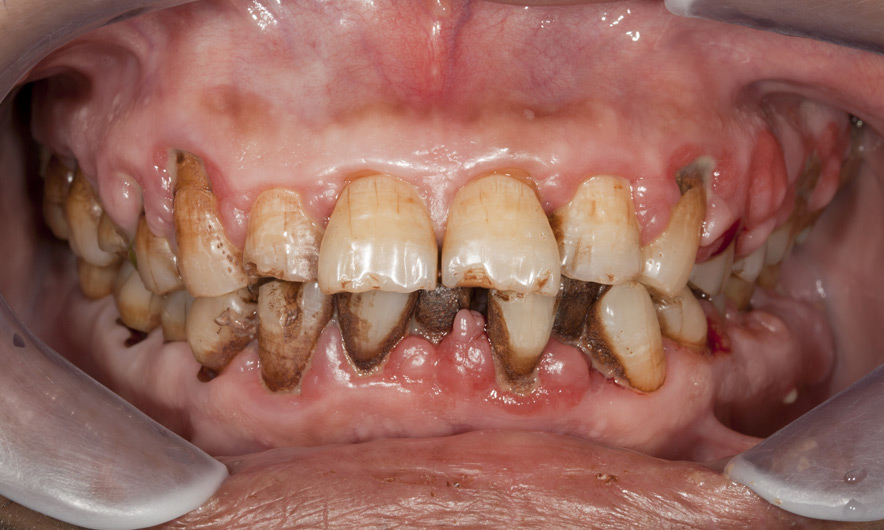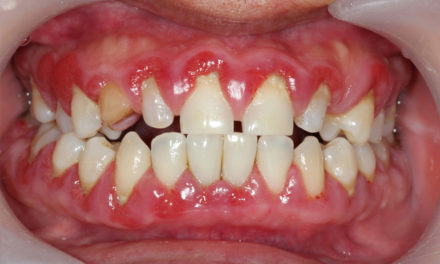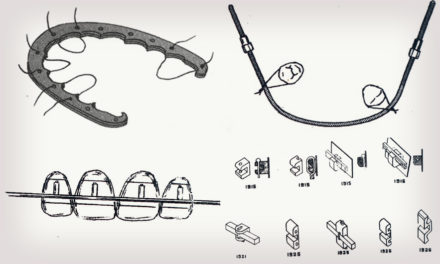Researchers find byproducts from gum disease incite deadly oral cancer growth
Researchers from Case Western Reserve University have discovered how byproducts in the form of small fatty acids from two bacteria prevalent in gum disease incite deadly oral cancer growth (the growth of deadly Kaposi’s sarcoma-related (KS) lesions and tumors in the mouth).
The discovery could lead to early saliva testing for the bacteria, which, if found, could be treated and monitored for signs of cancer before it develops into a malignancy, researchers say.
“These new findings provide one of the first looks at how the periodontal bacteria create a unique microenvironment in the oral cavity that contributes to the replication the Kaposi’s sarcoma Herpesvirus (KSHV) and development of KS,” said Fengchun Ye, the study’s lead investigator from Case Western Reserve School of Dental Medicine’s Department of Biological Sciences.
The discovery is described in The Journal of Virology article, “Short Chain Fatty Acids from Periodontal Pathogens Suppress HDACs, EZH2, and SUV39H1 to Promote Kaposi’s Sarcoma-Associated Herpesvirus Replication.”
The research focuses on how the bacteria, Porphyromonas gingivalis (Pg) and Fusobacterium nucleatum (Fn), which are associated with gum disease, contribute to cancer formation.
Ye said high levels of these bacteria are found in the saliva of people with periodontal disease, and at lower levels in those with good oral health—further evidence of the link between oral and overall physical health.
The deadly oral cancer growth KS impacts a significant number of people with HIV, whose immune systems lack the ability to fight off the herpesvirus and other infections, he said.
“These individuals are susceptible to the cancer,” Ye said.
Deadly oral cancer growth KS first appears as lesions on the surface of the mouth that, if not removed, can grow into malignant tumors. Survival rates are higher when detected and treated early in the lesion state than when a malignancy develops.
Also at risk are people with compromised immune systems: those on medications to suppress rejection of transplants, cancer patients on chemotherapies and the elderly population whose immune systems naturally weaken with age.
The researchers wanted to learn why most people never develop this form of cancer and what it is that protects them.
The researchers recruited 21 patients, dividing them into two groups. All participants were given standard gum-disease tests.
The first group of 11 participants had an average age of 50 and had severe chronic gum disease. The second group of 10 participants, whose average age was about 26, had healthy gums, practiced good oral health and showed no signs of bleeding or tooth loss from periodontal disease.
The researchers also studied a saliva sample from each. Part of the saliva sample was separated into its components using a spinning centrifuge. The remaining saliva was used for DNA testing to track and identify bacteria present, and at what levels.
The researchers were interested in Pg’s and Fn’s byproducts of lipopolysaccharide, fimbriae, proteinases and at least five different short-chain fatty acids (SCFA): butyric acid, isobutryic acid, isovaleric acid, propionic acid and acetic acid.
After initially testing the byproducts, the researchers suspected that the fatty acids were involved in replicating KSHV. The researchers cleansed the fatty acids and then introduced them to cells with quiescent KSHV virus in a petri dish for monitoring the virus’s reaction.
After introducing SCFA, the virus began to replicate. But the researchers saw that, while the fatty acids allowed the virus to multiple, the process also set in motion a cascade of actions that also inhibited molecules in the body’s immune system from stopping the growth of KSHV.
“The most important thing to come out of this study is that we believe periodontal disease is a risk factor for Kaposi sarcoma tumor in HIV patients,” Ye said.
With that knowledge, Ye said those with HIV must be informed about the importance of good oral health and the possible consequences of overlooking that area.
The research was supported by a career development grant at Center for AIDS Research at Case Western Reserve University, and a National Institute of Dental and Craniofacial Research grant.
Contributing to the study were Case Western Reserve University researchers Abdel-Malek Shahir and Nabil Bissada, from the Department of Periodontics; Xiaolan Yu, Jingfeng Sha, Zhimin Feng, Betty Eapen, Stanley Nithianantham, and Aaron Weinberg, from the dental school’s Department of Biological Sciences; and Biswajit Das and Jonathan Karn, from the Department of Molecular Biology & Microbiology at the School of Medicine.
© 2017 Case Western Reserve University
10900 Euclid Ave.
Cleveland, Ohio 44106
216.368.2000 (legal notice)







